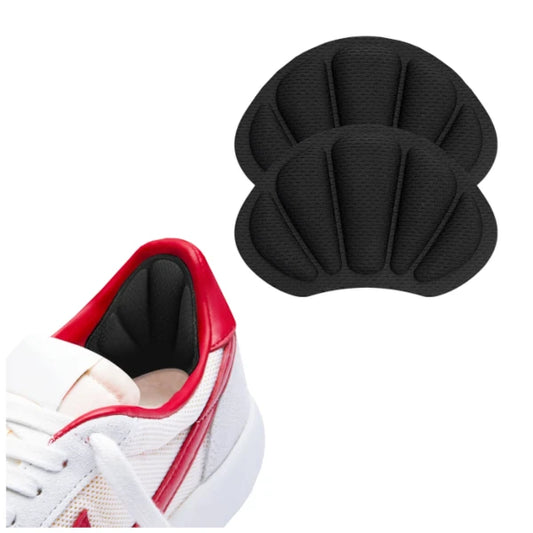
Beyond Medical Devices: A Holistic Approach to Plantar Fasciitis Relief
Share
6 Best Exercises for Plantar Fasciitis Relief
Imagine waking up every morning, dreading the first step out of bed because of excruciating heel pain. It can affect every aspect of daily life, from simple tasks to engaging in physical activities. Traditional medical devices provide temporary relief, but a more holistic approach that addresses the root causes and provides long-lasting relief can be much more effective. We'll delve into common causes, symptoms, and effective treatment strategies that prioritize overall well-being and long-term healing.

Understanding Conservative Therapy for Plantar Fasciitis
Conservative therapy is a holistic approach to treating plantar fasciitis that focuses on non-invasive treatments. This means avoiding surgical procedures and opting for less invasive methods to relieve pain and promote healing. Let's dive into the key components of conservative therapy for plantar fasciitis.
Rest:
One of the primary aspects of conservative therapy is rest. Giving your feet a break from activities that aggravate the condition can help reduce inflammation and allow the plantar fascia to heal. It's important to listen to your body and avoid activities that cause pain or discomfort.
Ice Therapy:
Applying ice to the affected area can help reduce inflammation and alleviate pain. Ice packs or frozen water bottles can be used for about 15-20 minutes at a time, several times a day. Remember to wrap the ice pack in a thin cloth or towel before applying it directly to your skin to prevent ice burn.
Stretching Exercises:
Stretching exercises play a crucial role in conservative therapy for plantar fasciitis. These exercises help improve flexibility, strengthen the muscles surrounding the foot, and relieve tension on the plantar fascia. Some common stretches include calf stretches, Achilles tendon stretches, and toe stretches.
Supportive Footwear:
Wearing supportive footwear is essential in managing plantar fasciitis. Shoes with proper arch support and cushioning can help distribute weight evenly, reduce strain on the plantar fascia, improve force absorption and provide stability during movement. Avoid flat shoes or those with inadequate support as they can worsen symptoms.
Conservative therapy is often considered as an initial treatment option before considering more invasive measures like injections or surgery. By following these non-invasive methods such as resting, using ice therapy, performing stretching exercises, and wearing supportive footwear, you give your body a chance to heal naturally without resorting to more invasive interventions.
The Importance of Exercise in Plantar Fasciitis Relief
Regular exercise is crucial for finding relief from plantar fasciitis beyond relying solely on medical devices. By engaging in specific exercises, you can strengthen the foot muscles, reduce strain on the plantar fascia, and alleviate pain.
Exercise plays a vital role in strengthening the muscles in your feet. By targeting these muscles through various exercises, you can improve their flexibility and stability. This helps to support the arch of your foot and reduces the pressure placed on the plantar fascia.

Incorporating specific exercises into your routine can significantly alleviate plantar fasciitis pain. Some beneficial exercises include:
- Calf stretches: These stretches help to loosen tight calf muscles that may contribute to plantar fasciitis.
- Toe curls: This exercise strengthens the intrinsic muscles of your feet.
- Arch rolls: Rolling a tennis ball or frozen water bottle under your foot helps massage and stretch the plantar fascia.
- Heel raises: These exercises target the calf muscles and help improve overall foot function, especially stability.
- Towel Scrunches: Place a towel flat on the ground and use your toes to scrunch it up towards you.
- Arch Lifts: Sit with both feet flat on the ground and raise only your arches while keeping your heels down.
- Ankle alphabet: Sit with your legs extended or lie down on your back. Move your ankle joint through all letters of the alphabet by using your big toe as a "pen."
Remember to start slowly with any exercise routine and gradually increase intensity as tolerated.
In addition to these targeted exercises, it's important to engage in low-impact activities such as swimming or cycling to maintain cardiovascular fitness without placing excessive strain on your feet.
By incorporating regular exercise into your daily routine, you can strengthen your foot muscles, improve flexibility, stability, and overall foot function while reducing pain associated with plantar fasciitis.
Evaluating the Effectiveness of Conservative Therapy for Plantar Fasciitis
To determine if conservative therapy is effectively managing symptoms of plantar fasciitis, several factors need to be considered. Monitoring pain levels over time is crucial as it provides insight into the effectiveness of the treatment. Assessing improvements in mobility, flexibility, and overall foot function also plays a significant role in evaluating progress.
Regular follow-ups with healthcare professionals are essential for tracking the effectiveness of conservative therapy. These follow-up appointments allow for a comprehensive assessment of the patient's condition and provide an opportunity to make any necessary adjustments to the treatment plan.
While surgical intervention may be necessary in severe cases, conservative management should always be explored first. Ankle surgery carries risks and requires a longer recovery period compared to non-invasive treatments.
Embracing a Holistic Approach to Plantar Fasciitis Relief
Congratulations! You've now gained a comprehensive understanding of conservative therapy for plantar fasciitis and the importance of exercise in finding relief. By incorporating these strategies into your daily routine, you're taking an active role in managing your condition and reclaiming your mobility.
But remember, this journey towards healing is not a sprint; it's a marathon. Be patient with yourself as you progress through the exercises and listen to your body's signals. Rome wasn't built in a day, and neither will your plantar fasciitis be resolved overnight. Stay committed to the process, and you'll soon reap the rewards of your efforts.
Now that you have the knowledge and tools at hand, it's time to take action! Start implementing the exercises discussed in this blog post into your daily routine. Remember, consistency is key. Make it a habit and gradually increase the intensity as your body allows. With dedication and perseverance, you'll be well on your way to finding long-term relief from plantar fasciitis.
FAQs
How long does it take to see results from conservative therapy for plantar fasciitis?
The timeline for seeing results can vary depending on individual factors such as severity of symptoms, adherence to treatment plan, and overall health condition. However, many individuals start experiencing improvements within 4-6 weeks of consistent conservative therapy.
Can I continue my regular physical activities while undergoing conservative therapy?
It's important to strike a balance between staying active and giving your feet enough rest during the healing process. While low-impact activities like swimming or cycling are generally safe, high-impact exercises should be avoided until significant improvement is observed. Your healthcare provider can help you manage intensity and frequency of these exercises.
Are orthotics necessary for treating plantar fasciitis?
Orthotics can provide additional support and help alleviate symptoms for some individuals with plantar fasciitis. However, they are not always essential and may not be suitable for everyone. It's best to consult with a healthcare professional to determine if orthotics are necessary for your specific case.
Can plantar fasciitis come back after successful treatment?
Plantar fasciitis can recur if the underlying causes and risk factors are not addressed. It's crucial to continue practicing preventive measures such as maintaining proper footwear, stretching, and strengthening exercises even after symptoms have subsided.
When should I seek medical intervention for my plantar fasciitis?
If conservative therapy fails to provide relief or if your symptoms worsen despite adhering to the treatment plan, it is advisable to seek medical intervention. A healthcare professional can assess your condition more comprehensively and recommend alternative treatment options if necessary.
Author Bio

Inês Pinheiro
Certified Physiotherapist for Shoulder and Knee Injuries
Inês is a skilled physical therapist with a special interest and extensive experience in working with athletes, specifically football players and also neurologic patients.






